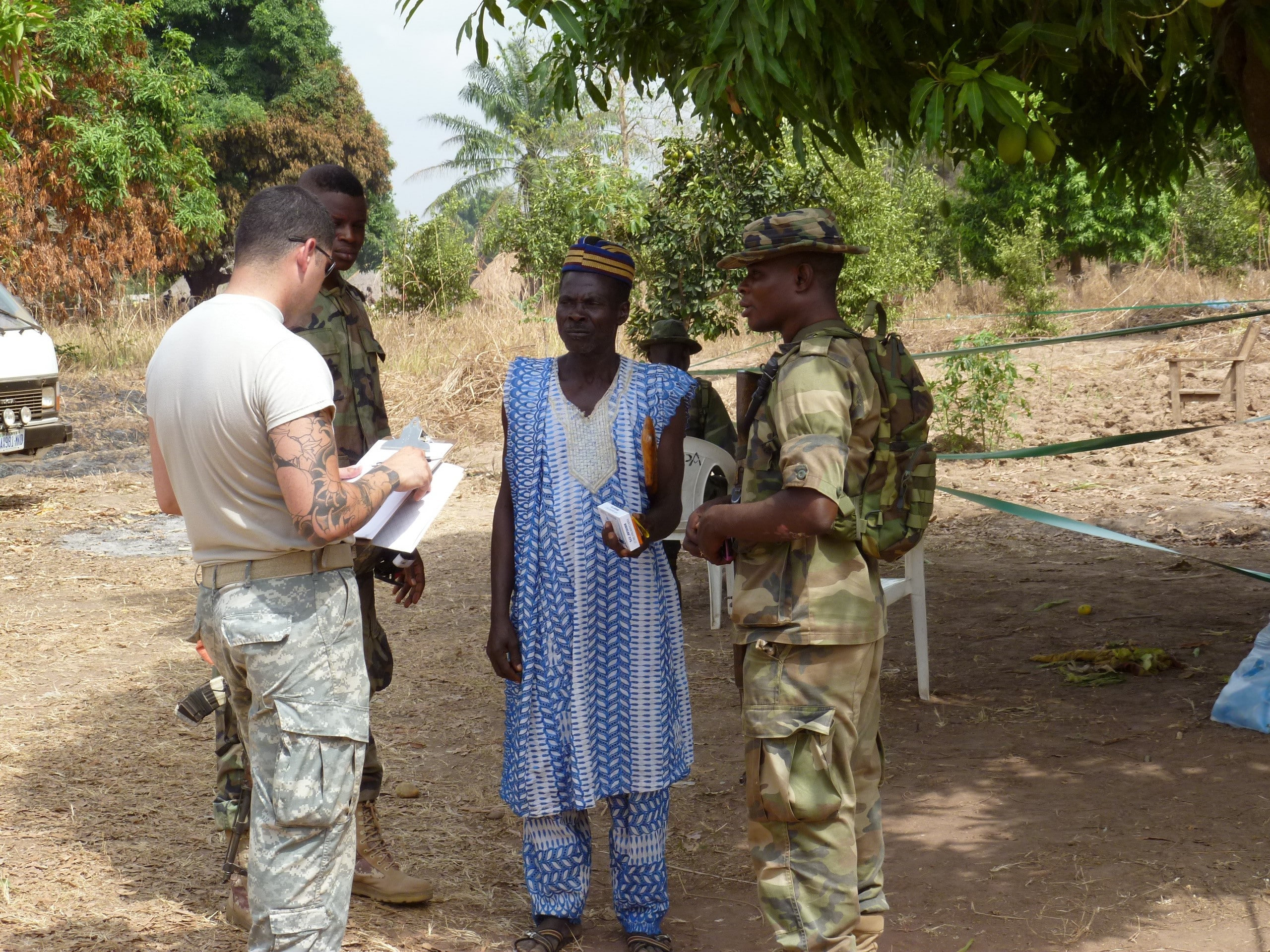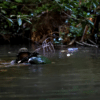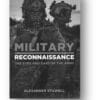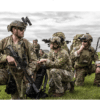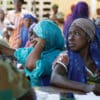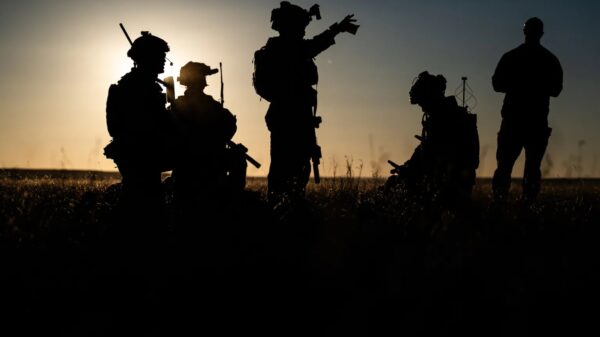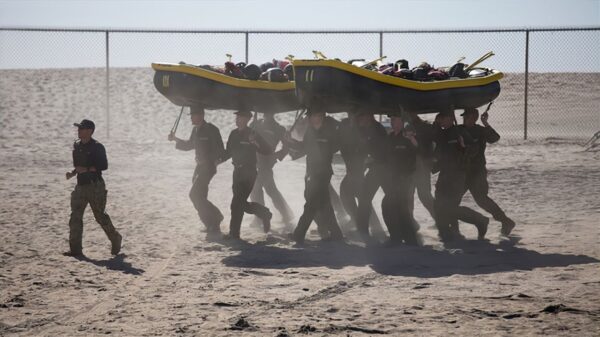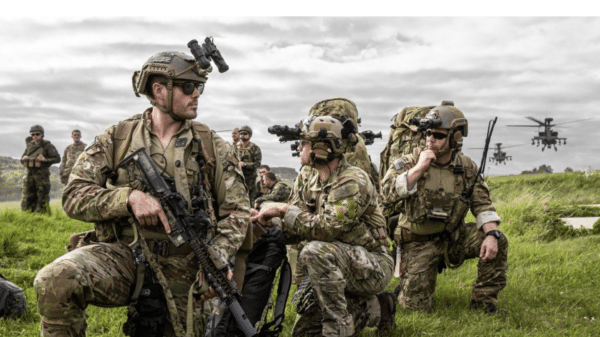Ian Edgerly, National Defense University, Fort Bragg, North Carolina, USA
Introduction
In mid-2023, the United States military experienced its second major setback in the West African Sahel since 2017. This time, the junta government in Niger ordered the removal of all U.S. military equipment and personnel from the American-led and -operated airbase in Agadez, except for Embassy staff stationed in Niamey, the capital.[i] Although surprising to many, this development was merely the latest in a long series of setbacks to U.S. security efforts in the Sahel. The recent wave of coups in the region coincided with a growing preference for security assistance in the form of regime protection provided by the Russian-linked Wagner Group—support that the U.S. had no intention of supplying.
CONTACT Ian Edgerly | ian.edgerly964@gmail.com
The views expressed in this publication are solely those of the author(s) and do not necessarily reflect the views, policies, or positions of the National Defense University. © 2025 Arizona Board of Regents / Arizona State University
The shift in preferred partners involved a complex set of dynamics: growing anti-French sentiment, a dislike for Western dominance in the region, political and military programs that were running in parallel to other countries’ programs, and a general disillusionment with democratic styled governance. Prior to this, U.S.-led training efforts, aimed at professionalizing Sahelian state militaries to counter violent extremist organizations (VEOs), had done little to stem the rapid expansion of Jihadi organizations.[ii] This is highlighted by the tragic events in October 2017, when four U.S. Special Operations Soldiers lost their lives in the village of Tongo Tongo in northwestern Niger. Although the 2023 expulsion highlights broader symptoms of flawed U.S. policy in the region, the Tongo Tongo incident more clearly illustrates the core issue by offering a snapshot of how violent extremist groups are defined and engaged in practice.
To better understand the complexity of U.S. security efforts in the region, this essay analyzes the extremist landscape in the sub-Saharan West African (SSWA) Sahel. Using examples such as Tongo Tongo, it identifies key characteristics of the U.S. military response to extremist threats and highlights where that response has been unsuccessful. The central research question guiding this analysis is: How are U.S. policies and strategies in SSWA aligned towards countering extremist violence, and how do they account for socio-political realities on the ground? To address this, the essay evaluates U.S. policy directives and responses in the Sahel, analyzing the policy choices made and whether those decisions contributed to a misalignment between policy solutions and environmental contexts.The discussion then concludes by incorporating aspects of irregular warfare to provide greater fidelity to policymaking, followed by practical suggestions for shifting or realigning U.S. strategies within a path dependency theory framework.
This analysis uses the theory of path dependency—specifically, a delayed or interrupted complexity model—to better explicate the factors shaping U.S. counter-extremism policy in the Sahel. This analysis examines two specific violent extremist organizations—Jamaat Nusrat al-Islam Wal Muslimeen (JNIM) and the Islamic State West African Principate (ISWAP)—to evaluate how U.S. policies attempted to counter them, and how those efforts fell short due to a failure to consider key sociological factors, particularly the tendency to perceive violent extremist organizations in the Sahel as separate from the societies in which they operate.
Within a path dependency framework, initial conditions prove critical in determining the trajectory an organization will ultimately follow. As Djelic and Quack note, organizational path dependency “suggests that the evolution of institutions, organizations, or practices does not necessarily follow a pure logic of efficiency. Early steps can, in certain circumstances, lead to the stabilization of less efficient solutions.”[iii] Hanger-Kopp, et al. similarly describe it as a process “that has the property of staying on a particular path so that past decisions and contingent events pre-determine what further steps may be taken.”[iv]
The discussion below identifies the initial conditions as a Global War on Terror (GWOT) heuristic for identifying and pursuing violent extremist organizations. Two possible strategic paths emerge from this foundation: one GWOT-focused (Path One) and the other non-GWOT-focused (Path Two). This essay focuses primarily on Path One, which the U.S. ultimately followed, while identifying Path Two as a potential alternative for pursuing more effective policy strategies. Path One is examined through a closed-system lens, as U.S. security policy in the region remained largely unchanged from 2001 to 2005 and failed to adapt to shifting contemporary conditions. This stagnation suggests a closed system without substantial feedback loops.
The concept of heuristics, defined as a “strategy that ignores part of the information with the goal of making decisions more quickly, frugally, and/or accurately than more complex methods,” serves as a core element of these dependent paths.[v] Two distinct heuristic lenses distinguish between Path One and Path Two. Path One relies on a GWOT heuristic that attempts to predict behavior based on poor modeling.[vi] In Path Two, by contrast, there is a complex social heuristic that informs both analysis and sensemaking, adding depth and contextual understanding to any strategy focused on countering extremism.[vii] Indeed, other scholars have also identified and applied the concepts of path dependency and heuristics in the strategic analysis of extremism. Samar Al-Balushi, in his book on Kenya, the U.S., and the war on terror, notes that “there have been two primary ways of characterizing armed conflicts: localized ethnic wars and globally threatening Islam.”[viii] Just as he argues for one path over the other, this essay makes the case for a shift to Path Two.
There are two potential ways for shifting path dependency. The first involves transitioning from a closed to an open system within the organization, allowing for internal modifications before deeper multilateral interactions redirect its trajectory.[ix] The second method involves a disruptive collision—a shift necessitated by either complete failure or the recognition that success depends on integrating new modalities through interaction with a competitor or rival system.[x] While these potential shifts are explored later in the article, understanding the initial policy conditions is essential for identifying when and how such shifts might occur.
To interrogate the initial conditions underlying the GWOT heuristic, this article posits two key postulations, which are analyzed throughout the discussion. The first asserts that the United States—through policy proscription and military mission execution—has identified extremist groups within the conflict ecosystem of the Sahel as terrorist groups acting counter to the states in the region. The second postulation recognizes that, although recent policy has begun to acknowledge the local dynamics of extremism, groups such as JNIM and ISWAP are portions of a broader, non-deterministic system within the Sahel.
This system is best understood through indicators highlighting its resilience. Stressors that affect one part of a group, such as financial constraints, do not necessarily degrade the entire organization, since these groups are embedded in complex systems with multiple interaction points. Nonetheless, U.S. policy documents, military analysis, and strategic discourse continue to view these groups—and the broader conflict ecosystem—in a linear fashion, assuming that “A+B=C,” despite the lack of grounding in temporally structured interactions between system elements. In reality, “A” does not always come before “B”, nor does “C” exist solely if “A” and “B” are present. When viewed through the lens of path dependency theory, these postulations offer a structured framework for identifying more viable and adaptive policy trajectories.
U.S. National Security Policy in Africa: A (Counter)Terrorism Focus
Before developing a firm understanding of the endogenous social dynamics underlying Sahelian extremism, it is necessary to identify the effects that external actors—particularly the United States—have sought to produce, as well as the strategies designed to achieve them. The first guiding document is the 2022 U.S. National Security Strategy (NSS) under the Biden administration,[xi] which outlines seven specific lines of effort (LOE) aimed at addressing a range of problematic contexts in Africa. Notably, all six GWOT-era National Security Strategies prior to 2022 also discussed African contexts.[xii] This marks the point at which GWOT heuristics under Path One take shape, as U.S. strategy categorized terrorist groups in a linear, relatively static way, with little evolution in its approach toward Africa.[xiii]
The first of these LOEs in the 2022 NSS focuses on the impact of global climate change on Africa’s many conflicts. As one of the regions most affected,[xiv] the Sahelian belt is experiencing an expanding Sahara Desert and shrinking Lake Chad, both of which have contributed to a litany of needs-based conflicts. The second major point emphasized in the NSS is Africa’s growing geopolitical significance. This is reflected in its growing population, projected to make up one-quarter of the world’s population by 2050, and its modernizing cosmopolitan urban centers, especially along the coastal regions, the Great Rift Valley, and much of southern Africa. A third point of importance is the directly mentioned Prosper Africa Build Together Campaign, which seeks to strengthen strategic and economic partnerships between the U.S. and African countries by developing bilateral trade and investment flows.[xv] Additionally, the strategy identifies “peace and prosperity” as a measure of effectiveness across economic, human, and hard security arenas. At this juncture, the National Security Strategy shifts from localized strategic initiatives to a broader geopolitical perspective, identifying Africa as a theater of strategic competition with China and Russia. It further outlines that terrorism remains a major concern, noting that many extremist groups—most of which are located in the West African Sahel—have the potential to strike the U.S. homeland. However, while terrorism is identified as one of the key challenges the U.S. must address on the continent, the strategy offers few specific proposals for how to do so. It does, however, directly link sub-regional groups to larger global extremist organizations such as Al-Qaeda (AQ) and the Islamic State in Syria and Iraq (ISIS), hinting at potential counterterrorism strategies—an important context for Path One.[xvi]
Overall, the U.S. National Security Strategy outlines only seven substantive areas in which the U.S. should collaborate with African partners to develop strategies and programs aimed at quelling portions of the violence and instability witnessed across the continent. However, there is a nascent disconnect between the primarily economic NSS strategy and any potential Department of Defense (DoD) strategy. While the 2022 National Security Strategy is vague for various reasons, many of which point to the grand strategic nature of the document, more refined strategic documents exist to address several of the issues mentioned within the National Security Strategy.
The U.S. Strategy Towards Sub-Saharan Africa fills in some of these strategy gaps. Written in 2022, this companion document to the U.S. National Security Strategy discusses four major objectives of how the United States will engage with a sub-region of the African continent: (1) fostering openness and open societies; (2) delivering democratic and security dividends; (3) advancing pandemic recovery and economic opportunity; and (4) supporting conservation, climate adaptation, and a just energy transition. The third of these four tenets proves the most influential to this research. The document directly mentions that the U.S. will prioritize counterterrorism (CT) missions and allocate resources towards reducing the threat from terrorist groups on the U.S. homeland, while also retaining the ability to act unilaterally in situations where threats are particularly acute.[xvii] Finally, regarding the issue of CT, the U.S. Strategy Towards Sub-Saharan Africa mentions that the U.S. will “employ tailored programs to build the capacity of local partners’ security, intelligence, and judicial institutions to identify, disrupt, degrade, and share information on terrorists and their support networks.”[xviii] Although this section does discuss other initiatives such as democratic backsliding, support for African democracies, and the prioritization of diplomatic efforts, this counterterrorism section remains most impactful due to its strategic focus, language, and priorities, which keep it strictly focused on Path One heuristics.
Sahelian-Focused Strategies
The Sahelian-focused strategies examined in this section align with those discussed above, as they continue to follow within the Path One track. The first U.S. initiative seeking to address widespread insecurity in the West African Sahel was the Pan-Sahel Initiative (PSI).[xix] This initiative began in 2002 by the U.S. State Department and was designed to coordinate and enhance border control against terrorist movement and arms trafficking and to identify drug smuggling routes in Mali, Chad, Mauritania, and Niger.[xx] It was eventually subsumed within the larger Trans-Sahara Counter-Terrorism Initiative (TSCTI), run by U.S. Africa Command (AFRICOM). However, a critical aspect of the Pan-Sahel Initiative was that it did not seek to address the root causes of extremism or terrorist activity. Instead, it was concerned with the potential risk of extremists from Afghanistan moving to the West African Sahel Region and finding refuge there.[xxi] There were even mentions of the area’s large communities of Muslims living there who had a history of taking issue with state behavior. In practice, the initiative helped to facilitate the training of local military units, primarily through U.S. Special Operations Forces, to carry out counterterrorism tasks. This highlights the continuity in strategic aims and goals from the early 2000s to the contemporary strategies mentioned here. Further, we can see focal points in this strategy that highlight the idea of terrorism and counterterrorism as being merely a function of training units to defeat it. This continues to scale in the subsequent initiatives below, serving as a key ingredient for the premise of this article.
The TSCTI, run by the U.S. Africa Command, played a key role in shaping U.S. policy in the region. It implemented several significant initiatives and, though later remade, has continued in some form up to the present.[xxii] The first of these was to assist countries with large Muslim populations in countering the rise and proliferation of extremist ideologies and the appeal that terrorist groups had within younger and disaffected groups by extending substantial aid packages. This effort was largely championed by the U.S. Agency for International Development (USAID) and the U.S. State Department (DoS) via various governance projects.[xxiii] The military aspect of the initiative, overseen by U.S. AFRICOM, centered around supporting partner countries—Algeria, Senegal, Niger, Morocco, Mali, Chad, Nigeria, Tunisia, and Mauritania—through provision of equipment, logistical support, and training. These efforts aimed to enhance border control techniques, rapid response capabilities, and terrorism prevention measures.[xxiv]
A notable military component was the establishment of Flintlock, an annual multinational security exercise led by Special Operations Command–Africa (SOCAF), which started in 2005. More significant structural efforts came in the establishment of a West Africa-focused Joint Special Operations Task Force (JSOTF), which was able to focus its efforts on managing and directing the U.S. special operations footprint and activities within West Africa. In short, terrorism was still labeled as a driver of violence and conflict in and of itself, and little effort was made at a strategic level to better identify drivers. Over time, the TSCTI morphed into the Trans-Sahara Counterterrorism Partnership (TSTCP), expanding to eleven North and West African states, most strongly in Mali, Niger, Burkina Faso, and Guinea.[xxv]
The final key to understanding the nebulous nature of the U.S. strategic focus in Africa is the mandate given to U.S. AFRICOM. Although it has remained largely unchanged since the command’s inception in 2007, there have been some advancements in how the U.S. identifies priorities on the continent. The first mandate centered around the idea that U.S. AFRICOM—a diverse command made up of military and Department of State leadership—would focus on training African security forces by improving their capabilities, sharing intelligence once gathered, and assisting in the coordination of regional responses.[xxvi] Path One further becomes noticeable through this trend of information sharing thus propagating the same heuristics through allies and partners. The mandate further stated that U.S. AFRICOM would continue to coordinate all activities via inter-agency collaboration, particularly in matters related to terrorism and humanitarian assistance.
The most recent posture statement presented to Congress in 2024 by the current (as of the time of writing) commander of AFRICOM, General Langley, reflected only a slight shift from the original intent. While it provided more specificity regarding extremism and terrorism by acknowledging the need to identify some behavioral drivers, it did not go beyond that.[xxvii] A more significant concern of the document, at least where West Africa is concerned, was the implementation of the Global Fragility Act (GFA) and the broader theme of great power competition.[xxviii] This is in keeping with the U.S. strategic shift since 2008 towards competition with China and Russia, as well as a more refined focus on integrated deterrence—a framework that brings multiple U.S. agencies into a coordinated effort, but now with a focus on countering China and Russia, rather than extremism. Overall, the way the U.S. defines its strategic focal points in West Africa prioritizes near-peer competition in the region, offering little in terms of refining the definitional drivers of extremism and terrorism. Even as strategic and tactical units remain engaged in counter-extremism operations across West African countries, the broader strategic focus has not evolved similarly.
How the United States Defines the Complex Violence Extremism Ecosystem in the Sahel Through a Military Lens
With counterterrorism identified as a continued priority, understanding Path One’s fixation on the definitional identification of terrorist groups in the Sahel requires first examining how the U.S. government currently defines the two largest groups in the region—and how those Path One heuristics have transferred to partner forces, both international and local. This section is organized into three parts: Director of National Intelligence (DNI) definitions and descriptions of violent extremist groups in the Sahel,[xxix] a discussion on the differing interpretations of counterterrorism versus counterinsurgency and how this divergence has created potential gaps in reasoning, and finally, a review of how U.S. military NATO partners have viewed these same conflict systems.
The DNI’s interpretation and definition of violent extremist organizations in the Sahel is used here because it represents the most widely recognized classification system within the U.S. government, including the Department of Defense (DoD). These definitions serve as real-time references for policymakers and senior DoD decision-makers, shaping their understanding of these groups in the absence of classified reporting.[xxx] However, policy and strategy actions taken by the U.S. DoD in Sub-Saharan West Africa align with the broader characteristics discussed here, suggesting that classified reporting largely functions as a controlled variable with minimal influence on overarching policies and strategies regarding the social positioning of these groups.
Granted, as discussed below, lower-level DoD teams operating directly within conflict zones often take sub-state and subgroup drivers of conflict and instability into account. Nonetheless, it is the broader campaign-level frameworks that establish authorities, permissions, and strategic guidance, ultimately shaping the mission sets that lower-level teams are tasked with executing. Accordingly, the focus here remains on the broader, campaign-level decisions that define U.S. engagement in the region.
At the time of writing, Jamaat Nusrat al-Islam Wal Muslimeen (JNIM) is the most militarily capable extremist group in the Sahel. The DNI website classifies JNIM as a terrorist group formed through the merger of several different groups.[xxxi] It is further described as a Salafi-Jihadist entity aligned with the global Al-Qaeda ideology, exploiting local divisions and socio-economic grievances to build support in northern and central Mali. According to the DNI, the group finances its operations through ransom payments, the collection of zakat (Islamic taxation), weapons smuggling, and the extortion of human and drug traffickers. The definition also notes that JNIM has a strategic goal of territorial expansion.
There are, of course, numerous platitudes—such as references to the exploitation of local divisions—that typically accompany government-level descriptions of violent extremist groups, often in place of more substantive analysis. Overall, the description of the group matches most of their actions. However, it lacks meaningful context, aside from a locator point of ‘Mali.’ Without that, the description could be transferred to any AQ-associated group. The second major group in the Sahel is the bifurcated group of the Islamic State West Africa Principate/Jamaat al as-Sunnah lid-Da’Wah Wa’l Jihad, commonly known as Boko Haram. This is a complex group made up of several factions, including the Ansaru strain, which operates primarily in Niger.[xxxii] Boko Haram was considered the most violent extremist group in the world in 2015-2016,[xxxiii] but has since reduced the severity of its campaign due to infighting and successful operations by the Nigerian military and the Lake Chad Basin countries’ Multinational Joint Task Force (MNJTF). Nevertheless, the group remains a powerful foil to state stability in the region.
The DNI definition of ISWAP/Boko Haram is absent of most descriptors found in the JNIM definition. It simply states that the group “seeks to overthrow the Nigerian government and replace it with a regime based on Islamic law.”[xxxiv] The definition also notes that the group pledged allegiance to the Islamic State in Iraq and Syria (ISIS) in 2015 and is opposed to Western interests in the region. Those who have studied Boko Haram and its variants know that this is a severely reductionistic view of the group and one that is not well suited to inform policy or strategy.
There exist other definitions and characteristics used by sub-echelons within the U.S. DoD, especially within the Special Operations Community,[xxxv] but these remain either within classified systems or are largely equivalent to the descriptors above. Overall, these descriptions reduce violent extremist groups to generic terrorist characteristics that could apply to most violent extremist groups. This lack of specificity fails to account for deeper contexts, such as the underlying drivers of extremism, the groups’ connections to the societies in which they are located, and the ways in which states leverage ethnic grievances. Without a nuanced understanding of these elements, along with a clear placement of each group in its historical, social, and geopolitical context, policy responses risk falling into the trap of “lumping,” or treating diverse conflict dynamics as monolithic.
The concept of “lumping” refers to the tendency—whether purposeful or inadvertent—to assign diagnostic similarities to diverse conflicts that actually differ significantly in origin, structure, and objectives. This includes categorizing groups that emerge from resource-based conflict, banditry, and violent extremism under the broad umbrella of terrorism. External to the U.S. DoD, there are volumes of extant literature that discuss the differentiation of drivers.[xxxvi] Yet within the group definition discussions elucidated above, there is an apparent lack of such differentiation. For example, the characteristics ascribed to JNIM in the DNI definition could easily fit several Fulani-centric, resource-based conflicts in the Sahel.[xxxvii]
Importantly, the vast majority of conflicts in the Sahel are deeply rooted in local dynamics, with little, if any, connection to international terrorist or extremist organizations.[xxxviii] Many of the groups in the region, including the two discussed above, blend ideological objectives with illicit ventures that often provide livelihoods to communities in the areas where they operate.[xxxix] The impact of this “lumping” is further discussed below, but a brief mention here is necessary to highlight the key actions taken to streamline the definitions of these groups and integrate them into existing strategies and policies designed to counter terrorism, particularly those shaped by Path One GWOT-era frameworks.[xl]
Counterterrorism and counterinsurgency (COIN) are critical concepts from a policy perspective, as they guide how courses of action are aligned with violent extremist organizations. U.S. Department of Defense CT strategy centers on the definition of terrorism as “premeditated, politically motivated violence perpetrated against noncombatant targets by subnational groups or clandestine agents.”[xli] To counter this form of violence, the DoD defines CT as “activities and operations taken to neutralize terrorists and their organizations and networks to render them incapable of using violence to instill fear and coerce governments or societies to achieve their goals.”[xlii] Similar, but distinct, is the U.S. Army’s counterinsurgency field manual definition of insurgency: “an organized movement aimed at the overthrow of a constituted government through the use of subversion and armed conflict.”[xliii] As with CT, the military has developed a corresponding definition of COIN: “a comprehensive civilian and military effort designed to simultaneously defend against and contain insurgency while addressing root causes,” often executed through shape–clear–hold–build strategies.[xliv] While these conceptual definitions and their respective counterstrategies share overlapping features, violent extremist groups often move fluidly between terrorism and insurgency to achieve their goals, highlighting another vulnerability in the rigid policy alignment within Path One heuristics.
In the definitions of both JNIM and ISWAP/Boko Haram above, the DNI notes that both groups are expansionist and that Boko Haram, specifically, seeks to overthrow the Nigerian government. Though CT and COIN are identified as distinct strategic approaches, they are often applied interchangeably in practice, with the terms frequently used as substitutes for one another.[xlv] For example, the U.S. strategy in the Sahel[xlvi] references CT five times in the context of supporting partner countries in countering threats to the U.S. homeland, yet does not mention the term insurgency even once, despite JNIM and Boko Haram displaying insurgent characteristics, as acknowledged by the DNI. Similarly, the U.S. National Defense Strategy for 2022 references terrorism but not insurgency,[xlvii] and the U.S. National Military Strategy for 2022[xlviii] has largely shifted to a pure focus on strategic competition, largely overlooking CT and COIN. The 2024 U.S. Africa Command Posture Statement does mention insurgencies, but only in the context of the ISIS-Mozambique conflict, while CT efforts in both Western and Eastern Africa are emphasized primarily in relation to U.S. partnerships.[xlix] This reflects a broader inconsistency in how the U.S. defines and distinguishes between terrorism and insurgency in the Sahel, both in group classification and in strategic response. At the policy level, this may appear to be a trivial distinction. However, in practice, these definitions inform lower-level operations, resource allocations, and, most critically, the strategic and operational understanding of the conflict ecosystems in which these efforts are carried out.
The general misalignment of U.S. strategy and group definition—relying on austere definitions that fail to account for complex social factors in the Sahel—has not only impacted U.S. efforts but also those of its partners. The Nigerian response to Boko Haram/ISWAP oscillates between CT and counterinsurgency, depending on the document in question.[l] Portions of Nigeria’s strategy have been shaped by observing and working with U.S. Africa Command, with actions in northeast Nigeria reflecting this strategic vacillation.[li] Both Mali[lii] and Nigeria, in turn, have largely avoided looking towards the root causes of terrorism and insurgency, shifting instead to an almost exclusively CT-focused approach—mirroring the U.S. strategy in the region. Granted, Nigeria and Mali are both complex conflict ecosystems, and both countries have other extenuating circumstances that provide other factors within the causal chain, such as Mali’s coup government and the existential threat of banditry and resource-based conflict in Nigeria. Nevertheless, it is well documented that countries that engaged with the U.S. military tend to adopt similar strategies through the process of norm diffusion, further reinforcing this broader pattern.[liii]
This same phenomenon is not purely endemic to U.S. partner countries like Nigeria[liv] but also extends to alliance member countries under collective security arrangements. Such dynamics can amplify the influence of faulty or overly predictive Path One heuristics. Until recently, France, a key NATO partner, maintained extensive security engagements in the West African Sahel. However, its agreements and treaties were overturned by governments in Mali, Niger, Burkina Faso, and, most recently, Chad, leaving France with few viable options for pursuing unilateral or multilateral objectives in the region.[lv] Prior to these setbacks, France led large-scale CT operations, often in partnership with Sahelian countries, such as Operation Serval (2013) and Operation Barkhane (2014), designed to protect French interests and counter extremist threats, some of which targeted the French homeland directly[lvi]
Slightly counter to the U.S. example of simplistic definitions of regional security dynamics, French military leaders in the Sahel region identified a wider set of contributing factors to the rise of JNIM and broader instability: “poverty; weak institutions; ethnic, religious, and tribal conflict; corruption; an abundance of small arms; deeply rooted conservative Islamic traditions; lingering postcolonial anti-European sentiment; and proximity to both Europe and the Middle East.”[lvii] Despite this more comprehensive understanding of conflict drivers in the region, France still pursued an almost exclusively CT-based strategy, treating violent extremist groups as largely separate from the societies they inhabit or manipulate.[lviii]
Ultimately, this section has shown that the United States has maintained a myopic view of violent extremist groups in the Sahel, conceptualizing them as isolated from their social and political environments. This framing has directly impacted the implementation of both CT and counterinsurgency strategies by the United States and by its partners, through norm diffusion. As a result, this misalignment has had tangible effects on how both U.S. partners and allies have approached similar conflict situations in the region, underscoring a broader struggle to adapt CT frameworks shaped by monolithic and entrenched heuristics.
Path One vs. Path Two: Rethinking Counterterrorism in the Sahel
With a firm footing in the GWOT-focused Path One dependency framework, we now shift to an alternative trajectory, referred to here as Path Two. As outlined in the introduction and methods sections, this approach challenges the assumption that violent extremist groups exist separately from the populations in which they operate. Instead, it posits that such groups fundamentally require population support in some fashion[lix] to sustain their activities. Additionally, these groups often seek to establish political authority within society, making their integration, however marginal, into their ‘host’ populations a critical factor in their survival and expansion.
This section will examine this issue from a different angle, focusing on four different indicators of violent extremist groups that have not been adequately considered at a policy level by the United States: (1) deep historical context, (2) local sentiment toward the groups, (3) motivations for joining, and (4) governance vacuums—otherwise referred to as a lack of state consolidation. These four characteristics shift the prevailing view that violent extremist organizations are not isolated entities, but rather part of the social fabric of their respective regions.
Prior to delving into these characteristics, it is worthwhile to identify another model that experts in the field of counterterrorism studies identify as being representative of sound analysis of violent extremist groups. Shultz and Dew[lx] propose a method of analysis that examines a ‘terrorist’ group’s concept of warfare, organization, and command and control, areas of operation, types of targets and operations, constraints and limitations, and the roles of outside actors. Although several of these characteristics can indeed house concepts such as those discussed below, they are largely bereft of any discussion of the groups being part of the social fabric. Instead, they primarily frame extremist groups as reactive social defense mechanisms—an incredibly important characteristic in its own right, but an incomplete perspective. Further, several studies have identified that the United States is reticent to analyze violent extremist groups outside of the ‘terrorism’ concept.[lxi] This hesitancy is not due to the violent acts these groups commit, but because of the high costs of ‘getting it wrong.’ Rather than countering the groups in a more sustainable manner, the U.S. often defaults to short-term, reactionary measures.
Path Two counters this idea and proposes a more sustainable approach to understanding and engaging these groups. The first key characteristic—deep time—situates extremist groups within a broader temporal and spatial framework. For example, Boko Haram/ISWAP is not simply a Jihadi group that emerged in 2002 out of a cohort of university students at the University of Maiduguri, led by Muhamed Yusuf until his death in 2009. To fully understand Boko Haram’s origin, one must look further back to the historical context of the Kanem-Bornu Empire, which until the early 1900s was the hegemon in the region. Indeed, Boko Haram became fractionalized in part over arguments as to whether the group should serve as a new version of the ‘Kanuri Caliphate’[lxii] or pursue alternative objectives.[lxiii] Developing this idea of deep historical linkages within contemporary groups, there was discussion amongst the founders of the group, including Yusuf, over what language sermons and religious writings should be delivered. Some advocated for Kanembu, the language of the defunct Kanem-Bornu elites and still the primary medium for religious scholars of Borno and Yobe states.[lxiv] Others argued for Hausa or Arabic so that more of the population in northern Nigeria could understand them and interact.[lxv] Expanding these historical facts into a more wide-ranging analytical framework, Scott MacEachern’s years of ethnographic and empirical research in Northeastern Nigeria suggest that Boko Haram is a continuation of long-standing economic and political dynamics at the frontiers of empire, now delineated as contemporary country boundaries.[lxvi] The group is very much a Salafi organization, but it also follows the traditions of slave-raiding states such as Kanem-Bornu, maintaining linkages between elites and illegal activities, including smuggling and trafficking. In this sense, the group operates not just as an ideological movement but as an extension of a deeply embedded historical system identified through language, collective identity, and embodiment of past empires—one that young men continue to seek entry into for economic and social mobility.
This same idea of deep history can also be applied to groups such as JNIM. Historian Adu Boahen developed similar studies of the Tuareg of Mali, highlighting homologous patterns.[lxvii] Control over the Saharan caravan trade routes, especially those between Gao, Mopti, and Timbuktu, were the prize protectorates of the Tuareg federations of the Northern Mali region. These routes were thrown into disarray when the Moroccan sultanate attacked the Western Sahara region to seize them in the early 1600s, although this was never fully accomplished. Ag Ghali, the emir of JNIM and an Ifhogas Toureg, has taken part in several Toureg uprisings over the years, previously leading the free Azawad movement[lxviii] and openly seeking to leverage power in the Northern Mali region through controlling trade.[lxix] Ag Ghali’s political moves not only serve his strategic interests in the present but also represent an attempt to overturn the chaos caused by the Moroccan caliphate in the past, as well as to shift the intra-Touareg confederation power structure.[lxx] Indeed, these linkages to deep time give both Boko Haram/ISWAP and JNIM different locations in space and time than previously identified. While this is less critical for external, outsider understandings of these groups, it is vital for understanding how locals might interpret their motives.
This interpretation of how extremist groups are perceived by locals can be assessed through local sentiment surveys. With regard to JNIM in Mali, respondents to a 2016 Mali Metré[lxxi] survey had little to no opinion about the violent extremist groups operating in their regions. However, close to fifteen percent of respondents believed that reconciliation should occur prior to any other developments within the country. Granted, this was prior to the spate of coups the country experienced in the early 2020s, but several extremist groups were already operating in the country—groups that would eventually coalesce into JNIM (Al-Mourabitoun, Ansar al-Dine, Al-Qaeda in the Islamic Maghreb, and a portion of Katiba Macina). Furthermore, security was thought to have improved in recent months[lxxii] in regions such as Sikasso, Ségou, Mopti, and Timbuktu. Yet data showed that violent extremist attacks had, in fact, increased substantially in those same regions.[lxxiii]
The 2024 Mali Metré[lxxiv] survey sheds more light on how local sentiment has evolved. While no new data was collected specifically for that year regarding disarmament or reconciliation, the report referenced 2018 survey results, in which 47 percent of respondents felt that the reconciliation process was no longer as important as it once was, without indicating what other approaches should be pursued. Returning to the 2024 data, most regions, except for Gao and Ménaka, were perceived as becoming more secure.[lxxv] However, reported attacks had increased in all regions of Mali that year.[lxxvi] This highlights that, although sentiment may shift slightly regarding what should be done to stem attacks, there remains a disconnect between perceived security and the actual frequency of attacks across all regions in Mali. This can be interpreted in a few ways, but the most compelling understanding is that locals take a pragmatic stance toward the groups operating in their areas. Rather than viewing these groups as external ‘invaders,’ the local population appears largely ambivalent toward the presence of these extremely violent groups, perhaps suggesting that they play a specific role in society or provide security dividends against other violent actors that the state is unable to address. This underscores the need for a more nuanced, contextualized understanding of local sentiment when formulating counterterrorism policies.
The third characteristic—reasons for joining extremist groups—further supports the idea that these organizations may play integral roles within the societies of northern Nigeria and Mali. Although this follows a similar methodological approach as the analysis of local sentiment, examining motivations for recruitment provides insight into how locals perceive the dichotomy between state-provided security and the security offered by extremist groups. In many cases, individuals join extremist groups as a direct response to violence perpetrated by the state—violence paradoxically intended to defeat the very groups locals are joining, ultimately forming a reinforcing feedback loop. Regarding JNIM, reasons for joining include personal motivations, protection, social influences, ethical concerns, group influence, economic necessity, family ties, political factors, religious beliefs, coercion, environmental stressors, and broader cultural, community, or sociological pressures.[lxxvii] Indeed, one individual surveyed remarked that “[t]here are many armed groups that defend the interests of their own communities[,] so the communities identify with certain armed groups, and to show their good faith they have a member of their family join the group so they can fight for their community.”[lxxviii]
In the case of Boko Haram/ISWAP, motivations include revenge for military actions, a sense of belonging, unemployment, and peer pressure. Interestingly, religious reasons did not factor highly with Boko Haram/ISWAP or JNIM recruits,[lxxix] contradicting the narrative of the DNI, which understands each group to be centered on religio-political conflict. Integrating reasons for joining further substantiates that these groups—and their connections with local communities—run far deeper than current security policies acknowledge. Rather than being isolated actors, extremist groups are often embedded within the strategic calculations of local populations, who weigh the risks and benefits of engagement based on their lived realities. This suggests a far more complex entanglement than is typically recognized in counterterrorism frameworks.[lxxx]
The final characteristic to consider is the lack of state consolidation and what that means for perceptions of the security provisions provided by extremist groups.[lxxxi] In essence, this lack of consolidation refers to the state—in this case Mali, Niger, and Nigeria—never having had the opportunity or capability to establish a firm monopoly on the use of force (in the Weberian sense) or to consistently provide quality political goods that citizens recognize as serving their best interests. There are many arguments as to why this has never occurred, but the majority center around the region’s socially diverse human landscape, longstanding traditions of self-rule, and the abundance of internal antagonisms that have prevented the state from fully coalescing.[lxxxii]
Most important for this discussion is how the characteristics of state non-consolidation can be identified. The first indicator is the recurring coups, primarily in the Sahel, that have occurred since independence was granted in the 1960s. Nigeria is a slightly different case in that it has largely gained a monopoly on the use of force and achieved a degree of consolidation; however, this has been largely relegated to the South of the country, due to colonial-era development policies by the British Empire that prioritized the South while leaving the North impoverished and marginalized.[lxxxiii] Another indicator of weak state consolidations is the presence of governance vacuums,[lxxxiv] especially in the case of Mali and Niger, where state authority remains focused on securing power in and around the capital cities, largely resorting to external power brokers (France, the U.S., and now the Wagner Group) to assist in the provision of security throughout the rest of their countries. The second method of assessing this lack of consolidation is through localized peace deals brokered by Jihadis in and around central Mali.[lxxxv] One striking example is the peace agreements facilitated by JNIM in Mopti, where tensions between Dogon farming communities and Fulani pastoralists have escalated in recent years due to increasing resource pressures. To help stem the bloodshed, which numbered in the hundreds,[lxxxvi] and to enhance their governance role in the region, JNIM brokered a peace deal between both groups using the recitation of ‘blood pacts’ rooted in generational memory between the Dogon and Fulani. This type of activity can only be accomplished in the absence of strong or even weak states and further helps to highlight the lack of consolidation.
These indicators and characteristics form and identify a complex system in the Sahel, where groups such as JNIM and Boko Haram/ISWAP are not necessarily separate and distinct actors, but instead part of the social fabric of the region. They should therefore be analyzed within their historical and societal contexts, rather than as external insurgent forces. Although the four characteristics above were chosen for their ability to best illustrate this phenomenon, other theories help highlight this interconnected nature, further supporting a shift toward a Path Two frame.
Vamik Volkan[lxxxvii] discusses the idea of trans-generational trauma transmission, which can stretch back tens of generations through stories passed down through cultural groups. As mentioned, Ag Ghali was involved in several Tuareg rebellions in Mali in response to the Malian state atrocities in the north of the country, as well as for other external pressures from the northern reaches of Africa. While this can impact individual psyches, Volkan notes that such trauma must be cultural in nature to motivate collective action or violence. In this case, Ag Ghali has successfully linked numerous disparate groups together under the JNIM banner to fight on behalf of such a cultural trauma.[lxxxviii] There are also the works of Mike Martin,[lxxxix] who condenses volumes of literature on why human and social groups come to blows with a simple, yet complex framework of five problems: identity, hierarchy, trade, disease, and punishment. Several of these concepts are easily identifiable above, especially within Oginni’s argument of civilians having to hedge their bets between the state and extremist groups in a search for identity, stability, and safety.
Finally, the four characteristics above, as well as the two concepts discussed here, can be wrapped into the basic root causes of conflict. Proximal causes, such as reasons for joining and the deep social fabric connections, provide immediate explanations for extremist group membership, but are not explicitly factored into the DNI group definitions. Remote causes should also be considered in deeper analysis, such as this. For instance, the issue of state consolidation—or lack thereof—should be integrated into any deeper analysis, as it remains a foundational factor shaping the persistence of violent extremist groups in the region. Overall, these characteristics and arguments challenge the current U.S. policy prescriptions within the Sub-Saharan African Sahel and suggest substantive additions to a Path Two frame. To help better identify how Path One’s misaligned characteristics manifest in practice, the following section examples two key examples: the Tongo-Tongo incident in 2017 and the Malian and Wagner Group failure in Tinzawaten.
Impacts: Real and In-Potentia
The first event demonstrating the real-world consequences of U.S. strategy in the Sahel is the fatal ambush in the village of Tongo Tongo (Niger) in October 2017.[xc] Operational Detachment Alpha (ODA) 3212 of the 3rd U.S. Army Special Forces Group was on an approved mission to capture a local commander who operated within the Islamic State in the Greater Sahara (ISGS) extremist group.[xci] ODA 3212 was unable to locate the commander and was forced to turn back, stopping in Tongo Tongo on their return to base. It was there that they were ambushed by ISGS fighters. ODA 3212 and the accompanying Nigerien military unit suffered several casualties, and the incident triggered multiple inquiries within U.S. AFRICOM and SOCAF. Of interest to this argument is a particularly telling excerpt from the investigation transcript, which states:
While there is evidence to indicate that the enemy enjoys freedom of movement in Tongo Tongo, there is not enough evidence to conclude that the villagers of Tongo Tongo willingly (without duress) aid and support them. Additionally, there is insufficient evidence to determine if villagers aided the enemy or participated in the attack.[xcii]
This passage makes it clear that U.S. counterterrorism policy views extremist groups and the populations in which they operate as distinct and separate entities—a binary perspective rooted in Path One heuristics that does not accurately reflect the reality of group dynamics. While this assumption reflects a policy-level framework, numerous reports indicated that ODA 3212 had a more nuanced understanding of the local environment but was nonetheless ordered to proceed with the mission.[xciii] In reality, ISGS is known to work openly with and leverage local populations in their areas of operation through both kinship ties and coercion. Given that Tongo Tongo was within ISGS’s operational zone, and the local population (predominantly Zarma) shared ethnic affinities with the group,[xciv] it is highly unlikely that locals were entirely uninfluenced by ISGS. Whether through coercion, passive acquiescence, or strategic alignment, local populations often navigate a complex landscape in which they must hedge their bets between state forces and extremist groups.[xcv] This incident exemplifies Path One’s shortcomings at the policy level, where flawed assumptions and inadequate analysis within counterterrorism strategy failed to account for the deeply embedded relationships between extremist groups and local communities in the Sahel. This lack of conceptual understanding ultimately undermines the effectiveness of U.S. security strategies in the region.
The second empirical example is the failed military operations by the Malian Armed Forces (FAM) and their Wagner Group (Africa Corps) counterparts in the small Northern Malian town of Tinzawaten in July of 2024. This incident highlights the far-reaching impact of faulty Path One heuristics via “downstream” or norm diffusion effects observed in how the Malian military planned for and engaged a group that shifts between terrorism and insurgency.[xcvi] Between 2001 and 2019 (prior to the onset of Section 7008 restrictions following Mali’s coup), the United States was Mali’s primary security partner through Section 333 partner capacity-building funding.[xcvii] With this support came training on how to conduct counterterror operations based on U.S. methodologies. As part of the failed military expedition to root out JNIM extremists and cut off smuggling routes in Algeria, the Malian military took the lead in identifying how and when to strike.[xcviii] In attempting to rely on locals to support the operation, similar to the Tongo Tongo incident, the Malian military miscalculated by assuming a binary dynamic often embedded in U.S. counterterrorism frameworks regarding extremism in the Sahel.[xcix] Granted, Mali is no longer a current security partner of the U.S.; however, the example remains illuminating as a downstream effect of the U.S. military training’s influence on (former) partner forces in the region. Indeed, Path One dependency shows clear limitations in its ability to address or understand the root causes of extremism, an issue that the Biden Administration identified as a priority in West Africa.[c]
Suggestions for Strategy and Policy Augmentations and Conclusion
As a concluding reflection on this study, it is evident that U.S. security policy in the West African Sahel remains rooted in a GWOT-era heuristic that views extremist groups as separate and distinct from the societies in which they operate. This approach is increasingly primed for failure, as demonstrated by the two case studies of Tongo-Tongo and the Malian military’s failure in northern Mali. A second path—still viable if policymakers acknowledge these failures as path collisions, even ex post facto—would require clearer inclusion of the four characteristics identified above: deep history, sentiment, reasons for joining, and lack of state consolidation.
By taking these into account within policy design, a few recommendations present themselves. First, current counterterrorism and counterinsurgency concepts may not be effective in the Sahel. As noted, extremist groups in the region do not function as purely external threats; rather, they are deeply embedded within the local social fabric, enabled by the absence of legitimate state authority. Instead of treating these groups as distinct entities to be countered through conventional military strategy, U.S. policy must reframe them within the broader sociopolitical ecosystem in which they exist—that is, along Path Two. Second, conflict analysis and resolution-informed approaches may be better suited to addressing the complexity of extremism in the Sahel. These approaches, when tied to conflict mapping models such as the sustainable livelihoods framework,[ci] allow policymakers to develop more nuanced interventions and to identify which conflicts require direct engagement and which should be left alone, recognizing that external actors may have limited influence.
Finally, aspects of irregular warfare strategies may provide a more effective long-term approach, as they heavily rely on civil-military coordination, information operations, foreign internal defense, and state-level legitimacy-building effort.[cii] Current developments in irregular warfare strategies are primarily focused on strategic competition, but since their core emphasis is on legitimacy development at the substate level, the missions and operations designed to achieve those objectives can be dual-hatted to address broader violent extremism paradigms. Irregular warfare also incorporates dynamic understandings of sub-state violence, making it adaptable to countering extremist threats at a localized level. Further, irregular strategies have long been employed by small states against those more powerful,[ciii] lending further credence to the argument for utilizing strategies that capitalize on fewer resources and focus on the fungible aspects of non-standard means. As an example, civil-military aspects of irregular warfare can and should be built around “approaches that are informed by the enemy and the populations around him, their attitudes, beliefs, frustrations, and the [group’s] periphery.”[civ] Although several aspects of irregular warfare strategies can be gleaned from CT and counterinsurgency definitions and requirements, those models are largely locked into Path One dependency. By contrast, irregular warfare strategies introduce new definitions of success, such as building legitimacy for partner forces or locals rather than relying on attrition-focused strategies, and are still emerging, meaning they have not yet fused into a path dependency. Similar arguments can be made for the other irregular warfare aspects discussed above. Indeed, a mixed strategy that integrates conflict resolution models with irregular warfare programs and initiatives can help avoid the kind of path dependency shift seen in CT and COIN approaches. Ultimately, stability in the West African Sahel will not be found without addressing extremism concerns. The U.S. might have shifted to a strategic competition focus, but extremist groups cannot be counted out as spoilers in many areas where the U.S. seeks dominance. They are ignored at the peril of all.
Dr. Ian Edgerly is an Assistant Professor of International Security Affairs in the Joint Special Operations M.A. program at the National Defense University’s College of International Security Affairs and a Senior Non-Resident Fellow at the University of South Florida’s Global and National Security Institute. His teaching and research center on violent conflict drivers in sub-Saharan West Africa, contemporary African security, and conflict analysis. A former Psychological Operations and Infantry officer, Dr. Edgerly previously led the Regional Expertise and Culture program at 1st Special Forces Command and held instructional and advisory roles at USASOC and the JFK Special Warfare Center. His publications explore West African conflict dynamics, including ethnic violence, Tuareg nationalism, and non-normative Just War Theory. He is currently applying complexity science to analyze evolving conflict patterns and state transformations in the region.
[i] “U.S. troops and equipment will leave Niger by mid-September, the Pentagon says,” BBC (19 May 2024). https://www.npr.org/2024/05/19/1252380146/us-troops-leave-niger.
[ii] White House, U.S. Strategy Toward Sub-Saharan Africa (2022), https://www.whitehouse.gov/wp-content/uploads/2022/08/U.S.-Strategy-Toward-Sub-Saharan-Africa-FINAL.pdf.
[iii] Marie-Laure Djelic and Sigrid Quack, “Overcoming Path Dependency: Path Generation in Open Systems,” Theory and Society 36, no. 2 (2007): 163,https://doi.org/ 10.1007/s11186-007-9026-0.
[iv] Susanne Hanger-Kopp et al., “Defining and operationalizing path dependency for development and monitoring of adaptation pathways,” Global Environmental Change 72 (2022),https://doi.org/10.1016/j.gloenvcha.2021.102425.
[v] Gerd Gigerenzer and WOlfgang Gaissmaier, “Heuristic Decision Making,” Annual Review of Psychology 62 (2011),https://doi.org/10.1146/annurev-psych-120709-145346.
[vi] Gigerenzer and Gaissmaier, “Heuristic Decision Making,” 459.
[vii] Gigerenzer and Gaissmaier, “Heuristic Decision Making,” 472.
[viii] Samar Al-Bulushi, War-Making As Worldmaking: Kenya, The United States, and the War on Terror (California: Stanford University Press, 2025), 13.
[ix] Djelic and Quack, “Overcoming Path Dependency: Path Generation in Open Systems,” 170.
[x] Djelic and Quack, “Overcoming Path Dependency: Path Generation in Open Systems,” 168.
[xi] White House, National Security Strategy (2022).
[xii] Ariel Fanger and Alice Hunt Friend, “U.S. National Security and Defense Goals in Africa: A Curious Disconnect,” Center for Strategic & International Studies (13 February 2018).
[xiii] A discussion on the definition of terrorism is to come later within the ODNI section; but a normalized definition of terrorism, and a terrorist group reads as: premeditated politically motivated violence perpetrated against noncombatant targets by subnational groups or clandestine agents
[xiv] Al Chukwuma Okoli and Saliou Ngom, “Introduction: Situating Banditry and Security Crisis in Nigeria ” in Banditry and Security Crisis in Nigeria ed. Saliou Ngom Al Chukwuma Okoli (New York: Routledge, 2024); Ian Edgerly and Scott Edmondson, “Herding Scapegoats, Framing Fulani: The Entanglement of Ethnic Conflict, Banditry, and Violent Extremism,” in Banditry and Security Crisis in Nigeria ed. Al Chukwuma Okoli and Sailou Ngom (New York: Routledge 2024).
[xv] Information on this program can be found at Prosperafrica.gov.
[xvi] House, National Security Strategy, 30.
[xvii] House, U.S. Strategy Toward Sub-Saharan Africa 8.
[xviii] House, U.S. Strategy Toward Sub-Saharan Africa 8.
[xix] Elizabeth Schmidt, Foreign Intervention in Africa: From the Cold War to the War on Terror (New York: Cambridge University Press, 2013).
[xx] Stephen Ellis, “Breifing: The Pan-Sahel Initiative,” African Affairs 103, no. 412 (2004): 459,https://doi.org/10.1093/afraf/adh067.
[xxi] Ellis, “Breifing: The Pan-Sahel Initiative,” 460.
[xxii] Schmidt, Foreign Intervention in Africa: From the Cold War to the War on Terror, 216.
[xxiii] Thomas Baltazar and Elisabeth Kvitashvili, “The Role of USAID and Development Assistance in Combating Terrorism,” (2007). https://www.armyupress.army.mil/Portals/7/military-review/Archives/English/MilitaryReview_20070430_art009.pdf.
[xxiv] Schmidt, Foreign Intervention in Africa: From the Cold War to the War on Terror, 216.
[xxv] United States Senate, Trans-Sahara Counter-terrorism Partnership Act, (2021).
[xxvi] Terry F. Buss, Nathaniel J. Buss, and Loui A. Picard, “Al-Qaeda in Africa: The Threat and Response,” in African Security and the African Command: Viewpoints on the US Role in Africa, ed. Terry F. Buss et al. (Sterling: Kumarian Press, 2011), 187.
[xxvii] Committee on Armed Service Statement of General Michael E. Langley, United States Marine Corps, Commander, United States Africa Command, Before the United States Senate Committee on Armed Services (2024).
[xxviii] The Global Fragility Act is focused on addressing root drivers of extremism and instability but a robust discussion on this act is omitted from this discussion in large part due the fact that USAID is the main proponent and executor of the act, versus DoD, but more to the point the GFA makes only two mentions of terrorism/terrorist and still discusses these groups as separate and distinct; More at: United States Senate, Global Fragility Act, (2019).
[xxix] Based on Terrorism being interpreted as a political end unto-itself.
[xxx] Department of the Army, FM 3-24: Insurgencies and Countering Insurgencies (United States of America: Department of the Army, 2014).
[xxxi] “Jama’at Nusrat Al-Islam Wal-Muslimin (JNIM),” 2022, https://www.dni.gov/nctc/ftos/jnim_fto.html.
[xxxii] “Ansaru’s comeback in Nigeria deepens the terror threat,” Institute For Security Studies (1 June 2022). https://issafrica.org/iss-today/ansarus-comeback-in-nigeria-deepens-the-terror-threat.
[xxxiii] Jennifer Cooke, J. Caleb Johnson, and Thomas Sanderson, Militancy and the Arc of Instability (Center for Strategic & International Studies, 27 September 2016), 20, https://www.csis.org/analysis/militancy-and-arc-instability.
[xxxiv] “Boko Haram,” 2022, https://www.dni.gov/nctc/ftos/boko_haram_fto.html.
[xxxv] US Department of Defense, Oct 2017 Niger Ambush Summary of Investigation (10 May 2018), https://dod.defense.gov/portals/1/features/2018/0418_niger/img/Oct-2017-Niger-Ambush-Summary-of-Investigation.pdf; Alexis Arieff, Lauren Ploch Blanchard, and Nicolas Cook, Sub-Saharan Africa: Overview and U.S. Engagement (21 July 2023).
[xxxvi] “RESOLVE Network; Researching Solutions to Violent Extremism “, 2024, https://www.usip.org/programs/resolve-network-researching-solutions-violent-extremism.
[xxxvii] Edgerly and Edmondson, “Herding Scapegoats, Framing Fulani: The Entanglement of Ethnic Conflict, Banditry, and Violent Extremism.”
[xxxviii] Schmidt, Foreign Intervention in Africa: From the Cold War to the War on Terror.
[xxxix] Heni Nsaibia, Eleanor Beevor, and Flore Berger, Non-State Armed Groups and Illicit Economies in West Africa: Jama’at Nusrat al-Islam wal-Muslimin (JNIM) (October 2023), https://reliefweb.int/report/mali/non-state-armed-groups-and-illicit-economies-west-africa-jamaat-nusrat-al-islam-wal-muslimin-jnim.
[xl] Michael Loadenthal, “Othering Terrorism: A Rhetorical Strategy of Strategic Labeling ” Genocide Studies and Prevention 13, no. 2 (2019),https://doi.org/10.5038/1911-9933.13.2.1704.
[xli] 22 U.S. Code § 2656f – Annual country reports on terrorism, § 2656f (2024).
[xlii] Department of Defense, DOD Dictionary of Military and Associated Terms (U.S. Department of Defense, 2021), 52. https://irp.fas.org/doddir/dod/dictionary.pdf.
[xliii] Department of Defense, FM 3-24: Insurgencies and Countering Insurgencies (United States of America, 2014).
[xliv] Defense, FM 3-24: Insurgencies and Countering Insurgencies, 184.
[xlv] Vanda Felbab-Brown, “Nigeria’s Troubling Counterinsurgency Strategy Against Boko Haram,” Foreign Affairs (2018). https://www.foreignaffairs.com/articles/nigeria/2018-03-30/nigerias-troubling-counterinsurgency-strategy-against-boko-haram; Alexandra Gorman, “Boko Haram is a ghost. The US needs to recognize that. ,” Atlantic Council (2023). https://www.atlanticcouncil.org/blogs/africasource/boko-haram-is-a-ghost-the-us-needs-to-recognize-that/.
[xlvi] House, U.S. Strategy Toward Sub-Saharan Africa
[xlvii] Department of Defense, National Defense Strategy (2022), https://media.defense.gov/2022/Oct/27/2003103845/-1/-1/1/2022-NATIONAL-DEFENSE-STRATEGY-NPR-MDR.pdf.
[xlviii] Chairman of the Joint Chiefs of Staff, National Military Strategy (2022), https://www.jcs.mil/Portals/36/NMS%202022%20_%20Signed.pdf.
[xlix] Statement of General Michael E. Langley, United States Marine Corps, Commander, United States Africa Command, Before the United States Senate Committee on Armed Services
[l] Felbab-Brown, “Nigeria’s Troubling Counterinsurgency Strategy Against Boko Haram.”
[li] Simone
[lii] Liam Karr, Africa File, September 19, 2024: JNIM Strikes Bamako; Hungary Enters the Sahel; Ethiopia-Somalia Proxy Risks (Institute for the Study of War September 19 2024), https://www.understandingwar.org/backgrounder/africa-file-september-19-2024-jnim-strikes-bamako-hungary-enters-sahel-ethiopia-somalia.
[liii] Sharan Grewal, “Norm Diffusion Through US Military Training in Tunisia ” Security Studies 31, no. 2 (2022),https://doi.org/10.1080/09636412.2022.2065925.
[liv] Mali lost US military aid assistance when their coup took place in 2021 but was a key partner in the Sahel prior to that.
[lv] Jonathan Beloff, “How France’s Lack of a Strategy in West Africa Indirectly Led to the Coups D’etats,” MIlitary Strategy Magazine 9, no. 2 (2024). https://www.militarystrategymagazine.com/article/how-frances-lack-of-a-strategy-in-west-africa-indirectly-led-to-the-coups-detats/; Howard French, “The End of Francafrique?,” Foreign Policy (2024). https://foreignpolicy.com/2024/02/26/france-sahel-mali-niger-francafrique-burkina-faso/.
[lvi] Christopher S. Chivvis, The French War on Al Qa-ida in Africa (Cambridge University Press: New York, 2016), 5.
[lvii] Chivvis, The French War on Al Qa-ida in Africa, 12.
[lviii] “France’s Action in the Sahel,” accessed December 15, 2024, https://johannesburg.consulfrance.org/France-s-action-in-the-Sahel.
[lix] Bard O’Neill, Insurgency & Terrorism: From Revolution to Apocalypse (Dulles: Potomac Books, Inc., 2005), 71; Mary Habeck, Knowing the Enemy: Jihadist Ideology and the War on Terror (New Haven: Yale University Press, 2006), 71.
[lx] Richard Shultz Jr. and Andrea Dew, Insurgents, Terrorists, and Militias: The Warriors of Contemporary Combat (New York: Columbia University Press, 2006).
[lxi] I. William Zartman and Guy Oliver Faure, “Why Engage, and Why Not? ,” in Engaging Extremists: Trade-offs, Timing, and Diplomacy ed. I. William Zartman and Guy Oliver Faure (Washington, D.C.: United States Institute of Peace 2011).
[lxii] Kanuri being the majority ethnic group of the Kanem Bornu Empire.
[lxiii] Jacob Zenn, Unmasking Boko Haram: Exploring Global Jihad in Nigeria (Boulder: Lynne Rienner Publishers, Inc. , 2020), 192.
[lxiv] Areas of Boko Haram/ISWAP operations
[lxv] Thurston, Boko Haram: The History of an African Jihadist Movement 61; Alexander Thurston, Salafism in Nigeria: Islam, Preaching, and Politics (New York: Cambridge University Press, 2016).
[lxvi] Scott MacEachern, Searching for Boko Haram: A History of Violence in Central Africa (New York: Oxford University Press, 2018), 198.
[lxvii] A. Adu Boahen, “The Caravan Trade in the Nineteenth Century,” The Journal of Africa History 3, no. 2 (1962).
[lxviii] A group seeking the independence of Northern Mali
[lxix] Steve Metcalf, “Iyad Ag Ghaly – Mali’s Islamist Leader,” BBC (2012). https://www.bbc.com/news/world-africa-18814291.
[lxx] Alex Thurston, Mali’s Tragic But Persistent Status Quo (January 2018), https://sahelresearch.africa.ufl.edu/wp-content/uploads/sites/170/Thurston-on-Mali.pdf.
[lxxi] Friedrich Ebert Stiftung, Mali Metre: Enquete d’opinion (2016), https://library.fes.de/pdf-files/bueros/mali/10100/2016-08.pdf.
[lxxii] From when the survey was taken.
[lxxiii] “Country Reports on Terrorism 2016,” 2016, https://www.state.gov/reports/country-reports-on-terrorism-2016/; “Conflict Trend Summaries 2016,” 2017, https://acleddata.com/2017/02/07/conflict-trend-summaries-2016/.
[lxxiv] Friedrick Ebert Stiftung, Enquete d’Opinion: Que Pensent Les Malien(ne)s (January 2024), https://library.fes.de/pdf-files/bueros/mali/10100/2024.pdf.
[lxxv] Stiftung, Enquete d’Opinion: Que Pensent Les Malien(ne)s.
[lxxvi] “The Sahel: Mid-Year Metrics,” 2024, https://acleddata.com/2024/08/14/the-sahel-mid-year-metrics-2024/.
[lxxvii] Anthony Morland, “Why Some Malians Joing Armed Groups,” (2018). https://www.thenewhumanitarian.org/analysis/2018/01/25/why-some-malians-join-armed-groups.
[lxxviii] Morland, “Why Some Malians Joing Armed Groups.”
[lxxix] Anneli Botha and Mahdi Abdile, “Reality Versus Perception: Toward Understanding Boko Haram in Nigeria,” Studies in Conflict and Terrorism 42, no. 5 (2017),https://doi.org/10.1080/1057610X.2018.1403152.
[lxxx] Oyewole Simon Oginni, “Prisoner’s Dilemma: Hedging Loyalties in (Un)Governed Space of the Lake Chad Basin,” Armed Forces & Society 51, no. 1 (2025),https://doi.org/10.1177/0095327X231177896.
[lxxxi] Ian Edgerly, “Violence in the West African Sahel is not about Terrorism ” E-International Relations (2023). https://reliefweb.int/report/burkina-faso/violence-west-african-sahel-not-about-terrorism.
[lxxxii] Edgerly, “Violence in the West African Sahel is not about Terrorism “.
[lxxxiii] This reason also partially explains drivers of instability, as with Boko Haram / ISWAP.
[lxxxiv] Going back to the local societal governance prior the arrival of the state, as well as post.
[lxxxv] Philip Kleinfeld and Mamadou Tapily, “‘We accept to save our lives’: How local dalogues with jihadists took root in Mali,” The New Humanitarian (4 May 2022). https://www.thenewhumanitarian.org/2022/05/04/we-accept-save-our-lives-how-local-dialogues-jihadists-took-root-mali.
[lxxxvi] T.A. Benjaminsen and B. Ba, “Fulani-Dogon Killings in Mali: Farmer-Herder Conflicts as Insurgency and CounterInsurgency,” African Security 14, no. 1 (2021),https://doi.org/10.1080/19392206.2021.1925035.
[lxxxvii] Vamik Volkan, Blood LInes: From Ethnic Pride to Ethnic Terrorism (Boulder Westview Press, 1997).
[lxxxviii] Metcalf, “Iyad Ag Ghaly – Mali’s Islamist Leader.”; Daniel Eizenga and Wendy Williams, “The Puzzle of JNIM and Militant Islamist Groups in the Sahel,” Africa Security Brief (2020).
[lxxxix] Mike Martin, Why We Fight (London: C. Hurst & Co. , 2018), 195.
[xc] Defense, Oct 2017 Niger Ambush Summary of Investigation.
[xci] This group operates in the same area as JNIM and is in fact an offshoot of the group. Several members split form the group, to include ISGS’s late leader, Al Sahrawi over differences with Ag Ghali and how the group should be run. The same characteristics mentioned in the prior section apply similarly to this group.
[xcii] Defense, Oct 2017 Niger Ambush Summary of Investigation.
[xciii] However, there are accounts that higher leadership continued to view these groups through a binary lens and pressed the ODA to continue Mission; See: Alice Hunt Friend, “DoD’s Report on the Investigation into the 2017 Ambush in Niger,” Center for Strategic & International Studies (15 May 2018). https://www.csis.org/analysis/dods-report-investigation-2017-ambush-niger.
[xciv] Heni Nsaibia and Caleb Weiss, “The End of the Sahelian Anomoly: How the Global Conflict Between the Islamic State and Al-Qa’ida Finally Came to West Africa,” CTC Sentinel 13, no. 7 (2020). https://ctc.westpoint.edu/the-end-of-the-sahelian-anomaly-how-the-global-conflict-between-the-islamic-state-and-al-qaida-finally-came-to-west-africa/.
[xcv] Eizenga and Williams, “The Puzzle of JNIM and Militant Islamist Groups in the Sahel.”
[xcvi] Wassim Nasr, “Wagner Mercenaries Clash with Rebels and Jihadists in the Sahel,” The Soufan Center (2024). https://thesoufancenter.org/intelbrief-2024-september-13/.
[xcvii] N.A., U.S. Security Partnerships and the Protection of Civilians: The Case of Mali and the Malian Armed Forces (Brown University 2022), https://watson.brown.edu/chrhs/files/chrhs/imce/research/Mali%20December%202022%20Factsheet.pdf.
[xcviii] Nasr, “Wagner Mercenaries Clash with Rebels and Jihadists in the Sahel.”
[xcix] Nasr, “Wagner Mercenaries Clash with Rebels and Jihadists in the Sahel.”
[c] Foreign Relations Committee, Full Committee Hearing: Instability and the State of Democracy in the Sahel and the U.S. Policy Response (2022).
[ci] Brandon Lundy and Akanmu Adebayo, “Introduction: Sustainable Livelihoods, Conflicts, and Transformation,” Journal of Global Initiatives: Policy, Pedagogy, Perspectives 10, no. 2 (2016).
[cii] Catherine Theohary, “Defense Primer: What is Irregular Warfare? ,” Congressional Research Service (2024). https://crsreports.congress.gov/product/pdf/IF/IF12565; David Ucko and Thomas Marks, “Redefining Irregular Warfare: Legitimacy, Coercion, and Power ” Modern War Institute at West Point (2022). https://mwi.westpoint.edu/redefining-irregular-warfare-legitimacy-coercion-and-power/; Michael Shurkin, “Strengthening Sahelian Counterinsurgency Strategy,” Africa Center for Strategic Studies (25 July 2022). https://africacenter.org/publication/strengthening-sahelian-counterinsurgency-strategy/.
[ciii] Sandor Fabian, Irregular Warfare: The Future Military Strategy for Small States (USA: self-pub, 2012).
[civ] Charles Cleveland et al., “Mastering Irregular Warfare,” (Dec, 14 2022). https://rand.org/pubs/commentary/2022/12/mastering-irregular-warfare.html.
